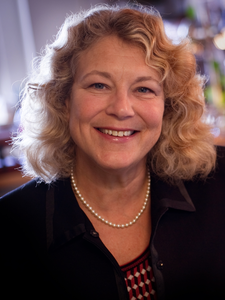[Sheree Bekker] In the lead up to the 13th Australasian Injury Prevention and Safety Promotion Conference, I invited keynote speaker Professor Andrea Gielen to answer a few questions for our blog.
Andrea C. Gielen, ScD, ScM is Professor and Director of the Johns Hopkins Center for Injury Research and Policy at the Johns Hopkins Bloomberg School of Public Health. This Center is home to a large and multidisciplinary faculty that conducts research, trains students, and supports research translation and practice partnerships. Dr. Gielen is a behavioral scientist with decades of experience as a public health department practitioner and as an academic researcher whose focus is on behavioral intervention trials. Currently, her work focuses on community and clinic-based programs to reduce home injuries, pedestrian injuries, motor vehicle occupant injuries, prescription drug overdose, and domestic violence. Dr. Gielen received her ScM in 1979 and her ScD in 1989 from the Johns Hopkins Bloomberg School of Public Health. She has received career awards from the American Public Health Association; the Centers for Disease Control; American Academy of Health Behavior; and the Elizabeth Fries Health Education Award.

- Tell us about your training and role in injury prevention
Most of my training is in behavioral sciences, health education, and injury prevention. I describe my role in injury prevention as a behavior change interventionist. Our team takes a comprehensive health promotion approach to behavior change, which means using innovative communication strategies, as well as incorporating policy and engineering solutions that make the safer behavior the easier (and when possible the default) behavior.
- What is your research focused on, and what do you see as the issues currently facing injury prevention?
My current research focuses on finding creative and evidence-based ways to reduce unintentional childhood injury, domestic violence, sexual assault on college campuses, and opioid overdose. The complexity of some of these problems is a challenge to injury prevention because there are so many different disciplines involved in the solutions. For instance, addressing the opioid epidemic requires perspectives from professionals in criminal justice, health policy, drug safety, etc. On the other hand, the simplicity of some of the solutions is a challenge due to lack of societal and political will to implement them. For example, why are there still unsafe playgrounds in low income neighborhoods when we know how to make them safer? Why are there stark disparities in motor vehicle death rates across population groups when we know how to design safer roadways and enforce driving laws?
- How does your research Take Action?
At the Johns Hopkins Center for Injury Research and Policy, one of our goals is to “close the gap between research and practice” to reduce injury. Our outreach core focuses on creating and disseminating evidence about what works to prevent and reduce injury in myriad ways. We host a “translation symposium” that brings together researchers and practitioners; we published a guide for state policy makers that has been replicated in more than a dozen states; we support a children’s safety resource center program that provides free safety education and low cost safety products to families; and we convene stakeholders to produce and disseminate “state of the evidence” documents on various injury problems.
- What can emerging researchers learn from you?
A dialogue between established researchers and students and junior researchers is essential to advancing the field. I find that extremely helpful in at least a couple of important ways. First, we “old-timers” can help make sure that our limited resources aren’t being used to “re-invent the wheel” — our historical perspective can help shape new solutions to both old and new problems. Second, younger folks can provide extraordinarily innovative ideas, drawing from the expertise with new technologies and their ability to have their “fingers on the pulse” of the new generations we seek to serve.
- Have you ever been to Australia and have a great story to tell? Or, what are you looking forward to most about your upcoming trip to Australia?
I have been to Australia several times and thoroughly enjoyed each trip. But, I have to say, the most influential trip was the first one back in the 1990’s when I had a chance to visit the Royal Children’s Hospital in Melbourne and discovered their children’s safety resource center. This was a model that I was able to take back to the United States, and I’m proud to say we have implemented at Johns Hopkins Hospital. We also partnered with our local fire department to create a 40 foot truck version of your model! My husband and I also LOVED moreton bay bugs!!
The call for abstracts for the 13th Australasian Injury Prevention and Safety Promotion Conference is now open.